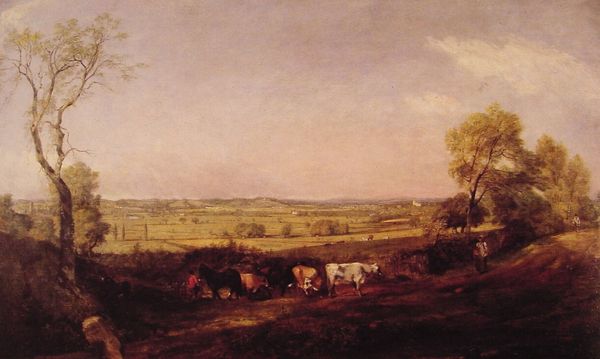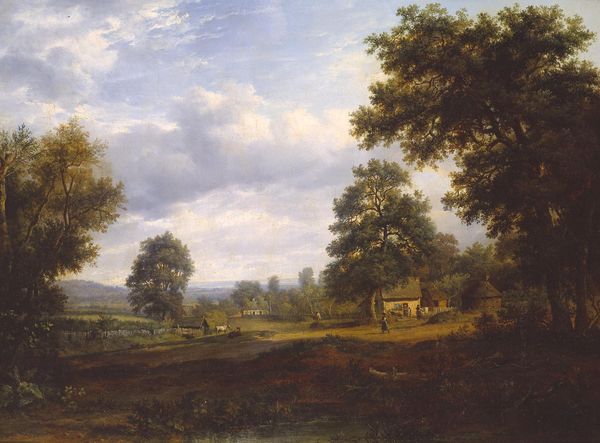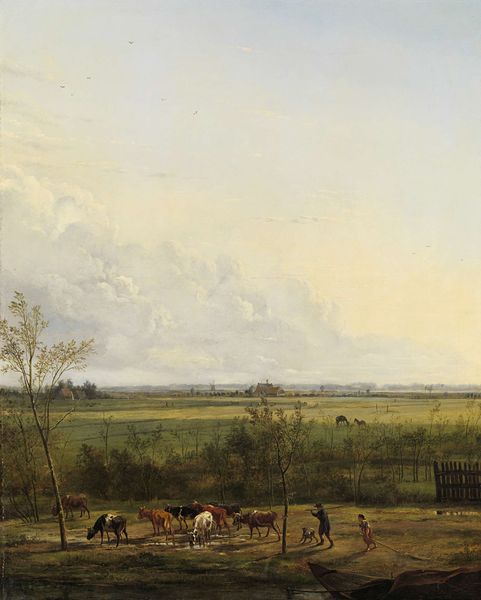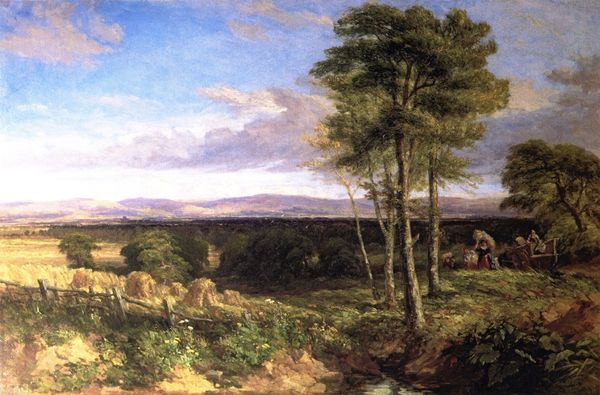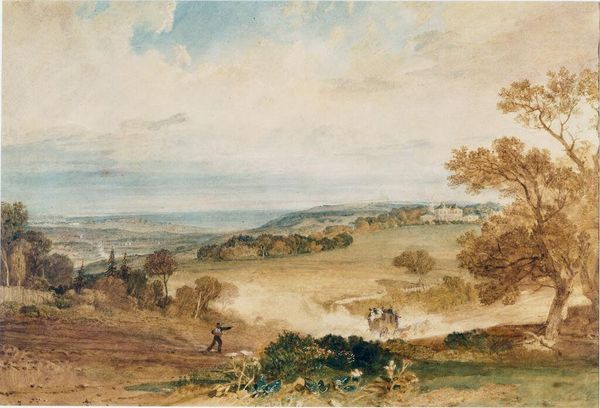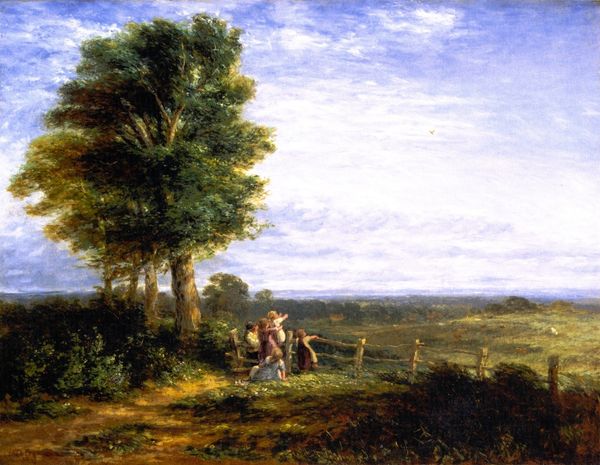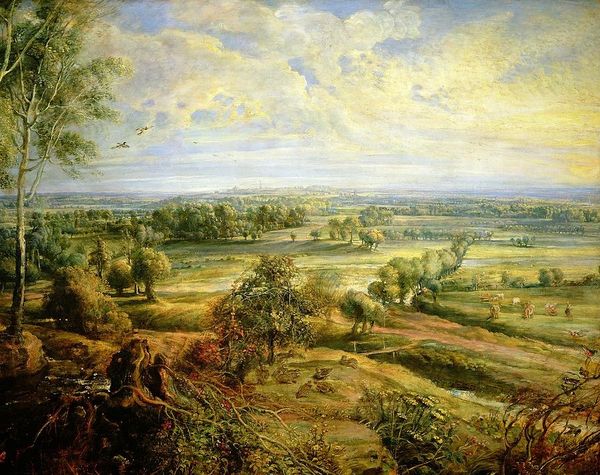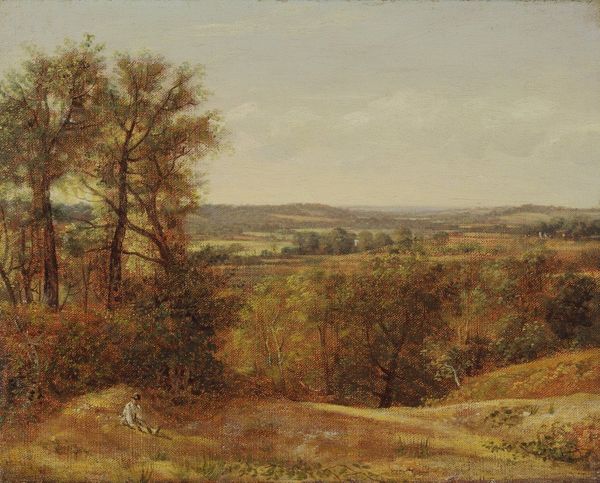
The Stour Valley with the Church of Dedham 1814
0:00
0:00
johnconstable
Museum of Fine Arts (MFA), Boston, MA, US
painting, plein-air, oil-paint
#
rural-area
#
painting
#
plein-air
#
oil-paint
#
landscape
#
oil painting
#
romanticism
#
realism
Dimensions: 56 x 78 cm
Copyright: Public domain
Curator: Let's spend a moment contemplating John Constable’s "The Stour Valley with the Church of Dedham," painted around 1814. It offers a vision of rural England at a pivotal moment. Editor: My first thought is how textured everything appears. I can almost feel the roughness of the track in the foreground, the solidity of the cart. You just want to reach out and touch it. Curator: Absolutely. And Constable was part of a movement reacting against the idealization of landscape prevalent at the time. Instead, he sought to capture the quotidian reality of rural life. Editor: You can certainly see it in the way he handles paint – the visible brushstrokes in the sky, the broken color used for the fields. It feels almost radical. I wonder about the pigments he used and the methods employed. What was available to him at the time? Curator: His focus really mirrored shifts in society at the time. He was interested in the material effects of the world he inhabited. How economic factors impacted rural environments became part of his discourse, moving landscape painting toward an authentic representation of Britain. Editor: Interesting. Because looking at it, there's such an inherent beauty, an almost naive beauty. But if we factor in a social dimension of shifting economics, one almost gets a sense of something vulnerable or even melancholy lurking beneath the idyllic scene. What I keep thinking about is what are the true layers here and what would his patron at the time truly be seeing, experiencing or wanting? Curator: Exactly. It’s a subtle tension between the visual pleasure of the scenery and the acknowledgement of change that makes it particularly compelling to this day. He truly democratized our perception of the canvas itself. Editor: Seeing the tools and processes through this contextual frame absolutely deepens my engagement with the painting. You notice the nuances far more acutely. It's no longer just a pretty picture, but a study in rural economics. Curator: Indeed. An excellent view into 19th century art and English society, I think. Editor: Very true, I might never have picked up on the complex nature had you not shared, that the true context is revealed with how he uses his oil paints, with layers of both subject and material together. Thank you for that!
Comments
No comments
Be the first to comment and join the conversation on the ultimate creative platform.
